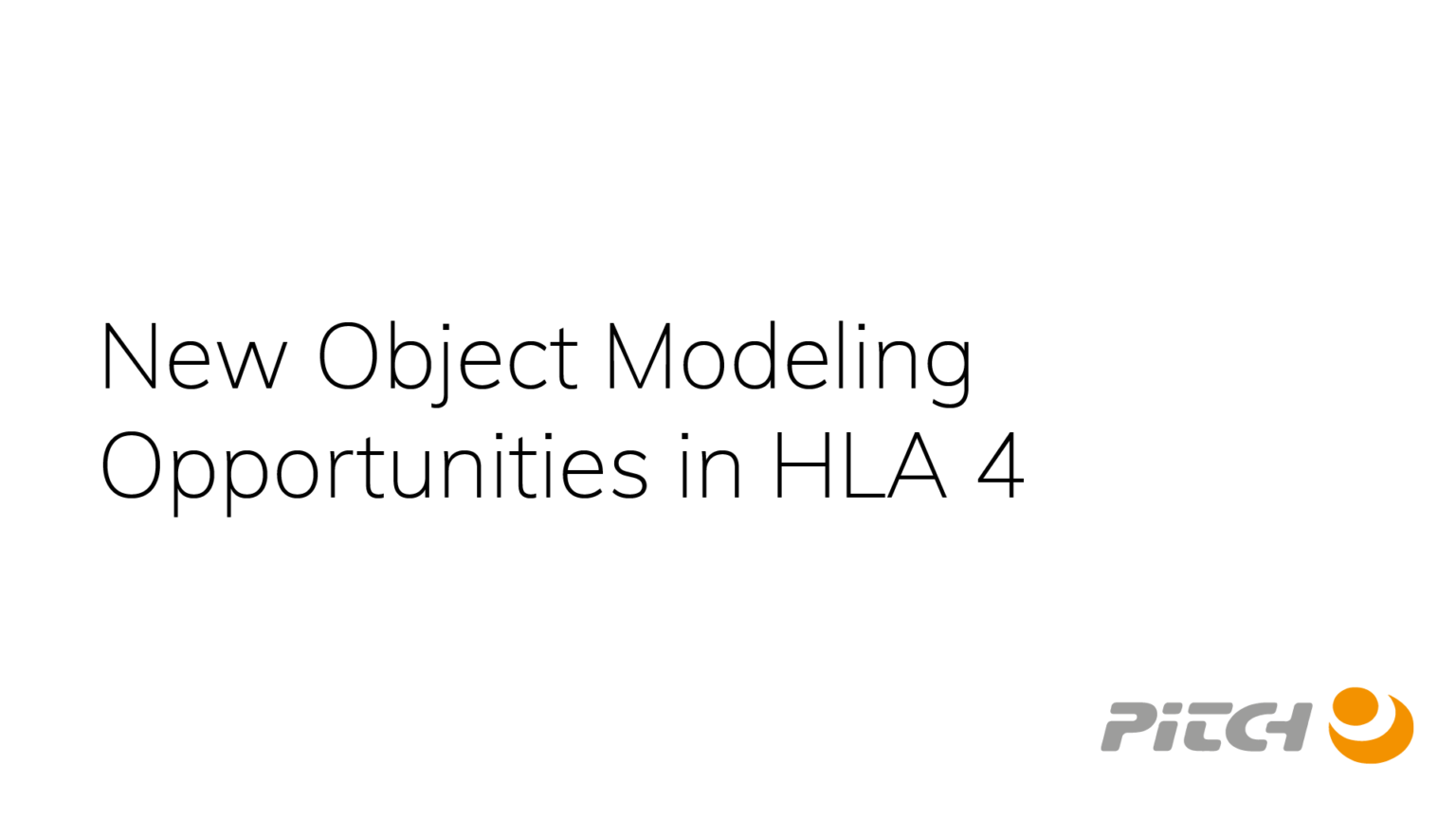One of the main success factors of HLA is that it makes it easy to create, maintain and share federation object models (FOM) for distributed simulations. Such models can be developed and extended for almost any domain, for example defense and security, space, engineering, medicine and transportation. Particular success stories include the Real-time Platform Reference FOM (RPR FOM), NATO Education and Training Network (NETN) FOM and the upcoming Space Reference FOM.
As experience from developing FOMs have been gathered, HLA has been extended and matured over time. HLA IEEE 1516- 2000 introduced well-defined data types and the use of XML syntax. HLA IEEE 1516-2010 introduced modular FOMs. Still, some challenges exist, in particular for making flexible extensions to reference FOMs. The HLA standard is now open for revision for a new version, nick-named HLA 4. This paper explains some of the proposed new features for object modeling. Several of them are based on requirements from the RPR FOM community but are useful for most FOMs.
One important requirement is to be able to make a more fine-grained extension of an already existing object model using additional FOM modules. There are four cases for this:It should be possible to add more attributes to an existing object class, using a new FOM module. The same applies to interaction classes where new parameters need to be added. A typical RPR FOM use case is to add more attributes to the standard Aircraft class.
It should be possible to specify more Dimensions for DDM filtering to an existing object class or interaction class to meet the requirements of a particular federation. A typical RPR FOM use case is to be able to add Lat/Long based filtering of platforms in a battlefield.
It should be possible to add more enumerators to an existing enumeration. A typical RPR FOM use case is to be able to add new entity types, that don’t exist in the standard SISO-REF-010 enumerations.
It should be possible to add more variants to an existing variant record data type. A typical RPR FOM use case is to be able to add alternative encodings that describe new data links to the Signal interaction. It has also been proposed to be able to clearly specify references, for example that the firing entity parameter of a fire interaction refers to a specific platform instance.
This paper explains these new features as well as how they can be used to simplify FOM development and enhance interoperability while maintaining backwards compatibility.
Authors: Björn Möller, Mikael Karlsson
Publication: Proceedings of 2019 Winter Simulation Innovation Workshop, 2019-SIW-023, Simulation Interoperability Standards Organization, February 2019

